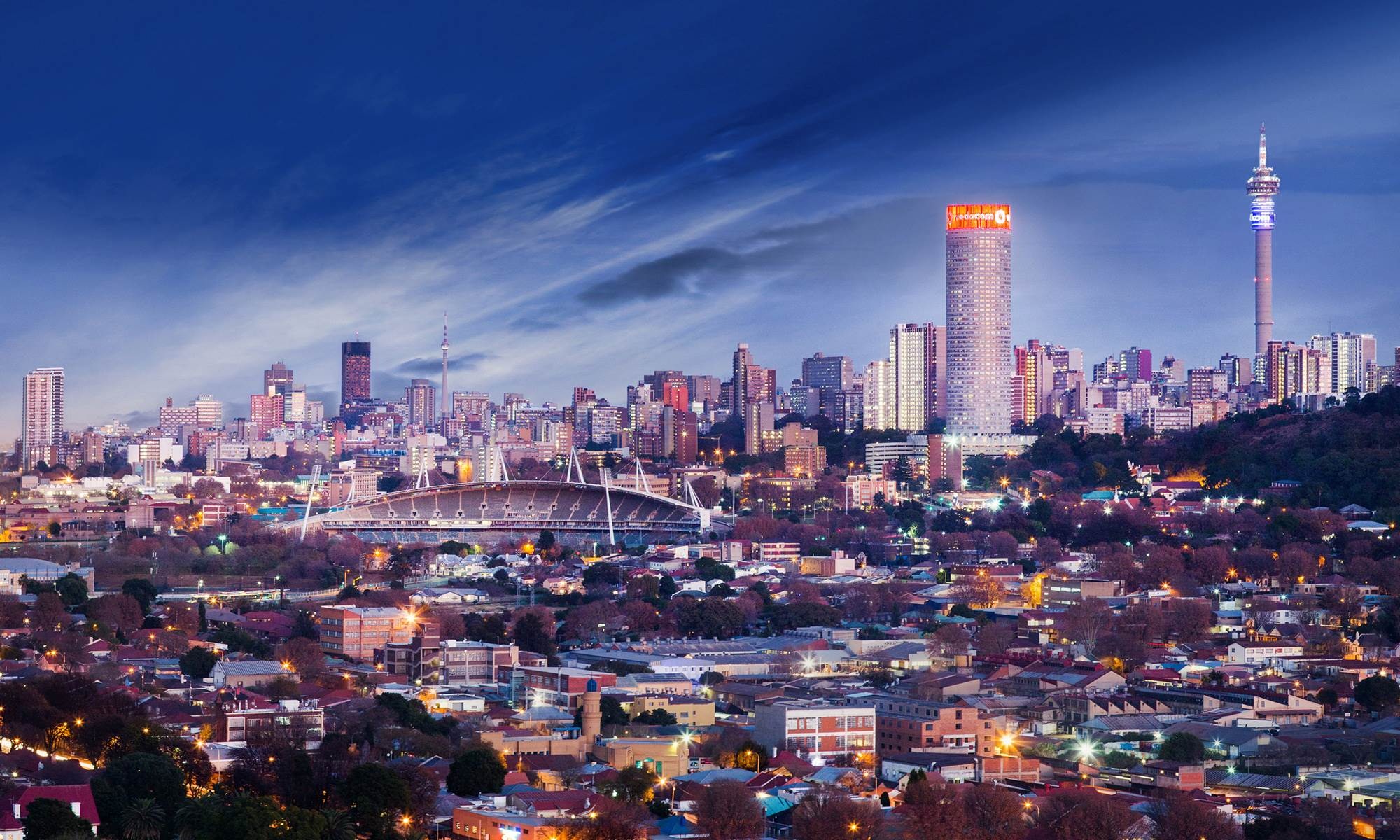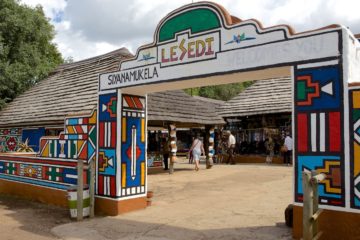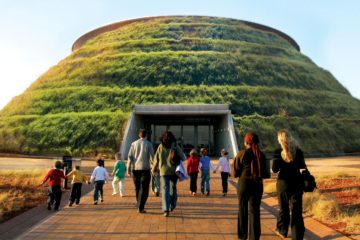Johannesburg is probably the only metropolis in the world whose location was not dictated by the presence of navigable water. Founded in 1886 to service the needs of the mines on the Witwatersrand, within fourteen years it had become the largest city in southern Africa as well as the country’s foremost centre for industry, commerce and finance. Indeed, its growth was so phenomenal that it rapidly transformed from a tented camp in 1886, to a settlement of shimmering but impermanent corrugated iron structures in 1886, to a fully-fledged town of permanent brick-and-mortar multi-storey buildings in 1890. Confidence in its future was hardly dented when its payable gold deposits began to run out in the early 1890s, and when the MacArthur-Forrest method of extracting gold at depth was introduced in 1891, its future was finally assured. Thus by the time its gold mines began to close down in the 1930s, its economy had moved firmly into secondary manufacture, and by the 1960s it had become a centre for international finance.
Johannesburg’s citizens were never angels, and although they reflected in many ways the values of their times, they were also pragmatic, a quality which often set them against the governments of the time. As a result they retained their links with the outside world, and while the rest of the country moved deeper into its own introspective bigotry, Johannesburg reflected many of the developments for democratic government found in Europe, North America and Russia. During the 1890s it opposed the corrupt practices of the Kruger government, became a focal point for the Labour movement in the 1920s, wholeheartedly supported the war against the Nazis in 1929, and when the servicemen returned from the war, it became an organising centre against the rising nationalism of the 1950s and 1960s. Through most of the apartheid era it elected to parliament the only MP who opposed the policies of the Nationalist Party, and currently remains a major centre for liberal thought and religious, racial and gender tolerance.
Today Johannesburg remains South Africa’s premier city, and while other centres may offer better environments to sip wine or soak in the sun, Jozi, as its inhabitants affectionately call it, remains the preferred destination of career professionals and serious-minded entrepreneurs. It is an acknowledged truism that its residents make their money in Johannesburg, but play in Cape Town, Plettenberg Bay, Durban and the Lowveld.
| DEPARTURE/RETURN LOCATION | Your Designated Location in Gauteng | ||||
| DEPARTURE TIME | Please arrive at least 1 hours before the tour. | ||||
| INCLUDED |
|
||||
| NOT INCLUDED |
|
City of Gold and its suburbs
Johannesburg, like many other boom towns, grew rapidly and with little planning, and thus the city covers an extremely large area. The main differences between the city’s suburbs tend to be socioeconomic: The north is often associated with wealth due to areas such as Houghton, which boasts large properties and contained the residence of former president Nelson Mandela, and Sandton which has become an alternative business district and is referred to as ‘Africa’s richest square mile’.





